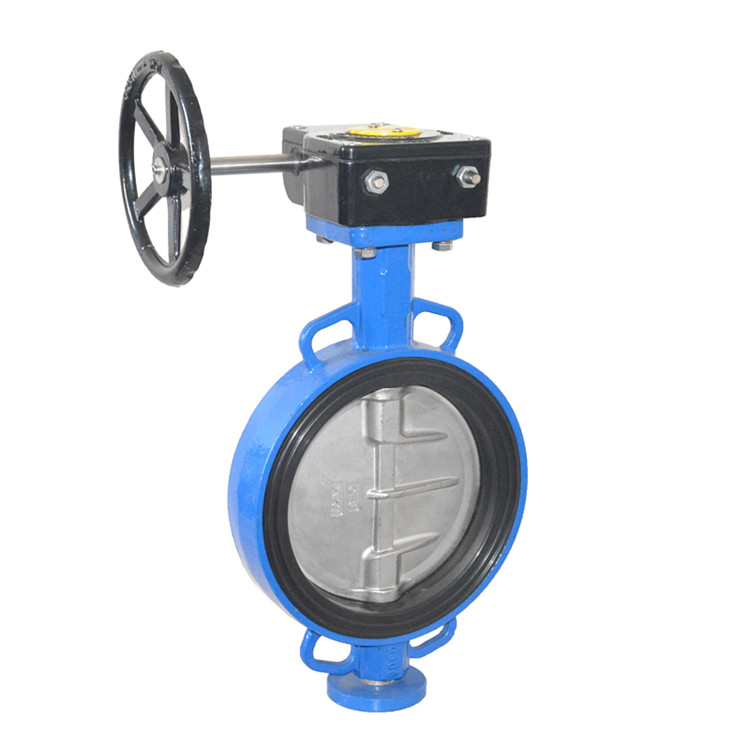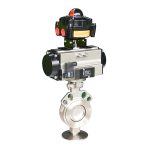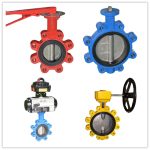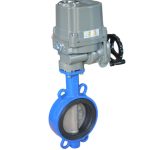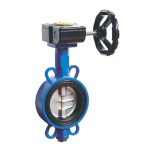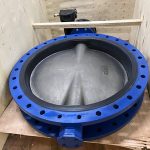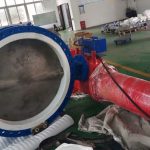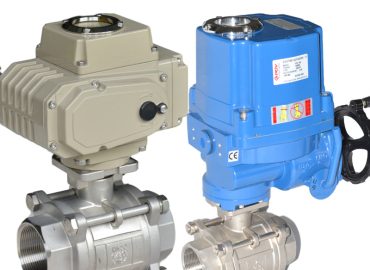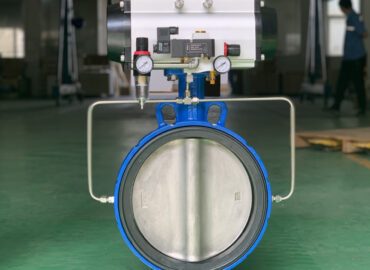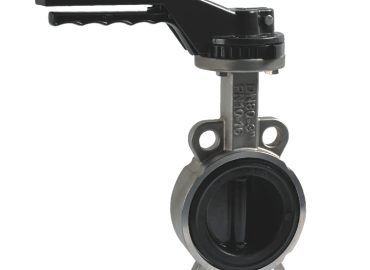When selecting butterfly valves, one of the most crucial considerations is the material of the valve. Different materials have varying properties, advantages, and disadvantages that determine the valve’s performance and lifespan. Selecting the right material depends on many factors, such as the type of fluid medium, application, environmental factors, cost, and certification requirements. In this blog post, we will delve into each of these factors and provide a comprehensive guide to selecting butterfly valve materials that will ensure optimal performance, reliability, and longevity in specific applications.
Introduction
When choosing butterfly valve material selection guide, there are several key factors to consider. One of the most important is the properties of the fluid medium that the valve will be handling. Other key considerations include the application and environmental factors, such as vibrational exposure and exposure to chemicals or other corrosive substances. Cost considerations are also important, as well as any certification and compliance requirements for the intended use of the valve. Finally, manufacturers’ information and certifications help to ensure that the valve is of high quality and reliable in its intended application. Selecting the right materials for butterfly valves is crucial to achieving optimal performance, safety, and longevity in a wide range of industrial and commercial settings.
Definition of butterfly valve
Wafer butterfly valve is a type of flow control valve that regulates the flow of fluid through a pipe by using a rotating disc to either permit or restrict the flow. The valve can be opened or closed partially or fully, depending on the need for flow control. Typically, butterfly valves are used in large-capacity pipelines in various industries, including water treatment, chemical processing, waste management, and power generation. Apart from their efficient flow control capabilities, butterfly valves are also lightweight, compact in design, and easy to install, making them a popular choice among users.
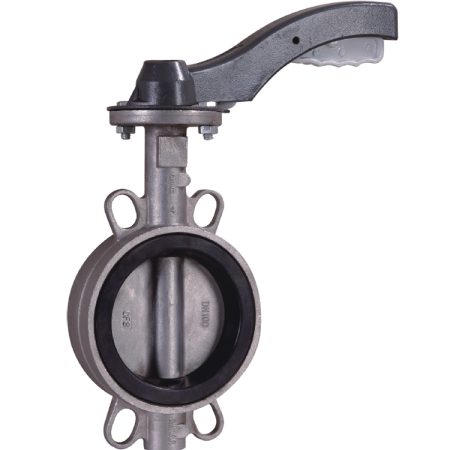
Importance of selecting proper materials
Selecting the proper materials when choosing lug butterfly valve is essential to ensure optimal performance, safety, and longevity in a range of industrial and commercial settings. The material’s properties can affect the valve’s performance, lifespan, and overall safety. Factors such as the fluid medium properties, operating conditions, and environmental conditions must be taken into consideration when selecting the appropriate materials for the valve. Choosing the correct materials minimizes the risks of corrosion and erosion, leakage, and other potential hazards that may lead to safety concerns, maintenance requirements, and downtime, ultimately impact the overall cost of operation. By selecting the right materials, users can optimize the performance of their butterfly valves, extend their lifespan, and avoid costly replacements or repairs.
Fluid Compatibility
Fluid compatibility is an essential factor to consider when selecting pneumatic butterfly valve materials. The type of medium that the valve will handle has a significant impact on the valve material selection, as certain materials may perform better with some fluids than others. For example, acidic or corrosive fluids may require a valve material with high corrosion resistance, such as stainless steel, while non-corrosive fluids may require a less expensive option, such as aluminum. Additionally, the valve material must be able to withstand the fluid’s pressure and temperature range to prevent degradation or failure. Therefore, considering the type of medium that the valve will handle, including its temperature and pressure range, is crucial when selecting the appropriate material for butterfly valves.
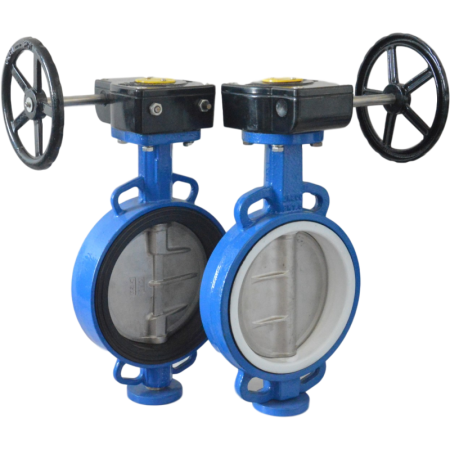
Understanding the properties of the fluid medium
Understanding the properties of the fluid medium is essential when selecting butterfly valve materials. For instance, its viscosity, density, and velocity can influence the valve’s function and performance. The viscosity of the fluid can affect the valve’s torque requirements, while the density can influence the stress that the valve experiences. Additionally, fluid velocity can impact the valve’s erosion and wear, which can affect the valve lifespan negatively. Therefore, correctly understanding the medium’s properties helps to select the appropriate valve material that can handle the conditions and pressure required without a reduction in functionality or lifespan.
Corrosiveness, erosiveness & viscosity
Corrosiveness, erosiveness, and viscosity are factors that play an important role when butterfly valve material selection guide. Corrosive fluids can degrade or erode the valve, resulting in leaks or valve failure, making it crucial to choose corrosion-resistant materials. Erosive fluids can also affect the valve’s performance, leading to a shortened lifespan or failed valve components, especially in high-velocity fluids. Viscosity, on the other hand, can have an impact on the valve’s torque requirements, potentially restricting and reducing the valve’s movement, which can impair performance. Therefore, it’s critical to consider the corrosiveness, erosiveness, and viscosity of the medium when selecting butterfly valve materials to ensure that the valve’s functionality, reliability, and lifespan are not compromised.
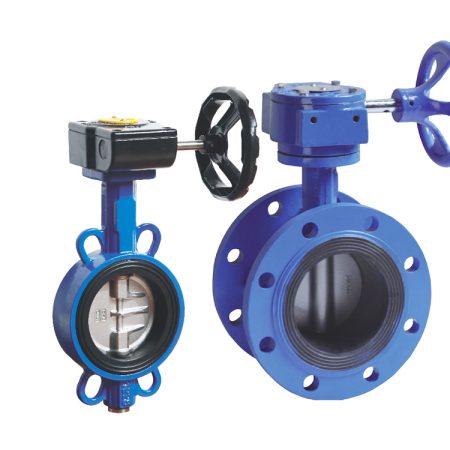
Importance of material compatibility
Material compatibility is crucial to ensure that all components of the butterfly valve are compatible with each other, reducing the risks of corrosion, excessive wear, and valve failure. When selecting butterfly valve materials, it is necessary to ensure that the components work well together in a given environment. Extreme temperatures, varying fluid properties, and other factors can affect the individual material properties and ultimately impact valve compatibility. Therefore, it is essential to identify components that are best suited for the intended application to ensure optimal performance, safety, and lifespan. Incompatibility can lead to cracks, leaks, or valve malfunctions, causing additional expenses and shutdowns. It is essential to select compatible materials to lessen maintenance demands, reduce downtime, and optimize valve performance.
Factors to consider during the selection process (e.g. chemical resistance, corrosion resistance)
During the selection process of butterfly valve materials, several factors should be considered to ensure that the valve operates smoothly and efficiently in the intended environment. One of the primary considerations is chemical resistance, which is essential when the valve is handling corrosive fluids. The valve material should be resistant to chemical attack to prevent degradation that can lead to leaks and valve failure. Corrosion resistance is also vital, especially when the valve is exposed to harsh conditions such as high temperatures, saltwater, or extreme pH levels. Wear resistance is another factor to consider when selecting the valve material to ensure longevity despite abrasive conditions. Additionally, pressure and temperature compatibility are essential considerations as the valve material should be capable of withstanding the temperatures and pressures it will experience without suffering any damage or affecting the valve’s performance. Finally, installation and maintenance requirements are critical to consider to ensure accessibility and ease of maintenance.
Operating Temperature Range
Operating temperature range is an essential factor to consider when butterfly valve material selection guide. The valve material must be able to withstand the temperature ranges that the pneumatic valve will be exposed to without suffering any damage. When working with high temperatures, the valve material should have excellent heat resistance capabilities to prevent damage that can affect the valve’s functionality. Choosing the wrong material for the valve may result in the valve degrading faster or breaking down and becoming unsafe. Additionally, selecting a valve material with too high of a temperature range can be costly, and the material may not function as well in the lower range of temperatures. Overall, selecting the proper valve material is crucial to ensure optimal valve performance and longevity in a range of operating temperature environments.
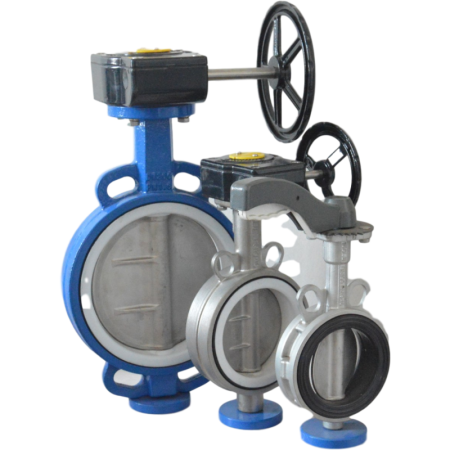
Understanding operating temperature ranges for different materials
Understanding the operating temperature ranges for different materials is crucial when selecting the appropriate valve material for a specific application. Each material has a different temperature range to which it is most suitable, as certain materials degrade or malfunction under specific temperatures. For example, materials such as aluminum and PVC have low-temperature ranges and may be unsuitable for high-temperature applications. Other materials like stainless steel and nickel alloys have higher temperature ranges and can handle more extreme temperatures. Understanding the temperature range of each material can help direct decision-makers in selecting the correct valve material that can handle the operating temperatures required for optimal performance and longevity.
Impact of high or low temperature on the valve’s integrity
High or low temperature can have a significant impact on a valve’s integrity and overall lifespan. At high temperatures, the valve material may expand or soften, resulting in deformation or cracking. This can cause the valve to become ineffective or fail entirely, leading to process breakdowns, downtime, and costly repairs. In extreme cases, high temperatures can lead to catastrophic failure, jeopardizing the safety of equipment, personnel, and the surrounding environment. Conversely, low temperatures can cause valve materials to become brittle, impacting their structural integrity and increasing the risk of mechanical failure. Low temperatures can make materials more subject to cracks, and in extreme cases, freezing can cause equipment to fail altogether. Therefore, it is essential to select the appropriate valve materials that can adequately handle the operational temperature range required for optimal valve function and reliable process operation.
Material options for a variety of temperature ranges
When considering flanged butterfly valve materials for various temperature ranges, there are a few to keep in mind. For low-temperature applications, materials such as polytetrafluoroethylene (PTFE) and polyvinyl chloride (PVC) can function effectively. For moderate temperatures, carbon steel and bronze can be utilized. For high-temperature applications, materials such as nickel, titanium, and stainless steel are most commonly used. These materials have high-temperature resistance properties, making them suitable for use in high-temperature environments. Additionally, graphite and molybdenum offer excellent heat resistance properties, making them suitable for use in extremely high-temperature applications. Understanding which materials are suitable for specific temperature ranges is crucial in selecting the correct valve material that can handle the operating temperature requirements for optimal performance and longevity. An experienced valve supplier can offer expert advice on the most suitable materials based on the operating environment’s specific needs.
Valve’s Intended Use butterfly valve material selection guide
A electric butterfly valve intended use is a critical consideration when selecting valve materials. The valve’s intended use can range from water treatment to oil and gas, and each application has unique characteristics that affect material selection. Factors such as fluid type, pressure, temperature, and flow rate will all influence the choice of material. For example, when selecting a valve material for oil and gas applications, the materials must adequately handle corrosive substances such as hydrogen sulfide and carbon dioxide. In contrast, when selecting a valve for water treatment, factors such as resistance to rust and scale buildup are essential. Intended use will also impact the valve’s size and other features such as manual or automated operation. Selecting the correct valve material based on the application’s intended use is essential for optimal performance, reliability, and lifespan.
Understanding valve’s intended use (e.g. pressure range, flow rate)
Understanding a valve’s intended use is essential to select the correct materials to ensure optimal valve performance. Generally, intended use includes factors such as the valve’s pressure range and flow rate. High-pressure applications require materials with high-strength properties, such as alloys that can withstand strong forces without buckling, warping, or deforming. Conversely, low-pressure applications may not require the same level of strength as high-pressure applications, but may need materials that can resist corrosion or wear caused by fluids. Flow rate is another critical factor to consider, as some materials restrict fluid flow more than others, which can lead to inefficiencies and slow performance. The valve’s intended use will also affect other valve features, such as the type of valve actuation system used, which could be manual or automated. Overall, understanding a valve’s intended use is crucial for selecting the appropriate materials to optimize valve performance and reliability.
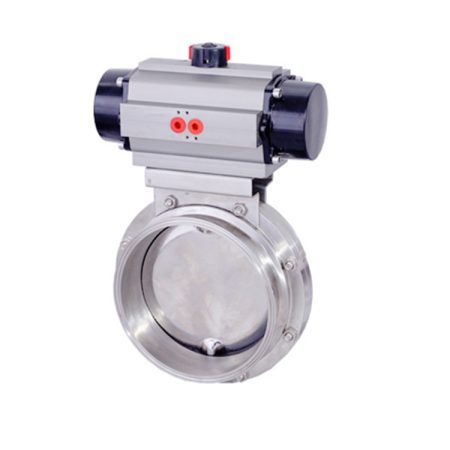
Selecting the appropriate material for specific applications (e.g. high temperature and pressure resistant materials)
Selecting the appropriate material for specific applications is vital to ensure the valve’s performance, safety, and longevity. High-temperature and high-pressure applications require different materials than low-pressure, lower temperature applications. Selecting high temperature and pressure-resistant materials is vital to ensure that the valve is not compromised under extreme conditions, which can lead to valve failure, leaks and equipment damage. Materials such as nickel alloys, carbon, and stainless steel are often utilized when working with high temperatures and pressures. When considering valve materials for corrosive applications, selecting materials with high-resistance to corrosion such as titanium or Hastelloy, can provide optimal performance and longevity. Understanding the specific variables that affect the valve’s performance is crucial to ensure optimal material selection for a given application. Consulting with experts can aid in selecting the best materials for any given application.
Environmental Factors butterfly valve material selection guide
Environmental factors are crucial to consider when butterfly valve material selection guide since they can impact the valve’s longevity and functionality. Factors such as humidity, weather conditions, and exposure to harsh chemicals can impact the valve’s performance and structural integrity. Additionally, environmental factors such as ultraviolet light can degrade certain materials such as plastics, leading to cracks or brittleness compromising valve functionality. When selecting materials, it is essential to consider environmental factors that could impact the valve’s materials’ properties to ensure that the valve can withstand the environmental conditions that it will experience. Environmental factors can lend themselves in a number of ways, including using materials that are resistant to certain environmental conditions or regular maintenance and cleaning to prevent environmental pollutants that can degrade valve materials.
Understanding environmental factors (e.g. exposure to chemicals, vibrations, shocks)
Understanding environmental factors is critical when selecting butterfly valve materials to ensure optimal performance and longevity. When selecting valve materials, one must consider environmental factors such as exposure to harsh chemicals and other corrosive substances that can erode valve materials. Vibrations are another consideration since they can cause mechanical fatigue in the valve material, leading to cracks and other issues. Shock loads can also weaken valve materials, reducing the valve’s reliability and safety. Additionally, environmental factors such as humidity, wind and weather conditions should also be considered. Humidity can cause oxidation, while wind and weather conditions can cause mechanical wear and tear, compromising the valve’s lifespan. Understanding how environmental factors can affect valve materials can guide valve material selection and help ensure optimal valve performance and safety. Well-informed decisions regarding the materials used in a given environment can help avoid costly maintenance, repairs, and downtime.
Selecting materials suitable for the specific environmental conditions
Selecting materials suitable for the specific environmental conditions is crucial when choosing butterfly valve materials to ensure optimal valve performance and longevity. The valve material must be resistant to environmental factors such as corrosion, vibration, and shock loads. For example, in environments with exposure to corrosive substances such as hydrogen sulfide or carbon dioxide, selecting materials such as stainless steel, nickel alloys or Hastelloy can prevent corrosion and maintain valve integrity. In contrast, environments with high humidity levels may benefit from materials that prevent corrosion and rust, such as painted or coated carbon steel valves. Where vibration and mechanical shock are an issue, materials such as ductile iron or reinforced plastics may be appropriate due to their ability to dampen vibrations. Material selection should be deliberate and carefully done to ensure the valve can handle the specific environmental conditions it will experience. Working with experienced valve suppliers who can offer insights and recommendations on material suitability in specific environments can help ensure optimal performance and longevity.
Cost Considerations butterfly valve material selection guide
Cost considerations are essential when selecting butterfly valve materials for an application. Higher-end materials such as exotic alloys, titanium, and ceramics may offer superior performance characteristics, but they can come at a higher cost than standard materials. Selecting materials that are over-engineered for a given application may also raise the overall cost of the valve without offering additional benefits. Therefore, it is essential to weigh the benefits of higher-end materials against their cost and whether the benefits justify the additional expense. Additionally, the cost of the valve material must be balanced against the potential cost of repairs and downtime that could be incurred if the valve fails due to the use of lower-grade materials. Overall, balancing valve material cost versus performance considerations is an essential factor in making informed decisions that optimize valve performance and minimize overall costs.
Consideration of the cost of materials
When considering the cost of materials, there are various factors to take into account. In some applications, high-end materials such as exotic alloys, titanium, and ceramics may be required due to high-temperature, high-pressure, or corrosive conditions. However, the cost of these materials can be significantly higher than those of standard materials. Additionally, selecting over-engineered materials can drive up the overall cost of the valve. While higher-end materials may provide superior performance and durability, it is important to evaluate whether the benefits justify their additional expense. By balancing the cost of valve materials against their possible benefits, one can make well-informed decisions that optimize performance and minimize costs. When choosing valve materials strictly based on cost, it is important to consider the potential long-term costs of valve failure, repairs, and downtime. A comprehensive approach that considers both material cost and benefits is necessary to reduce costs and ensure optimal valve performance.
Balancing cost with functionality to find the best option for a specific application
Balancing cost with functionality is a crucial factor when choosing butterfly valve materials for specific applications. The goal is to find the best option that offers optimal performance while keeping costs reasonable. It requires evaluating different factors such as the valve’s intended use, environmental conditions, temperature range, pressure range, and flow rate. While high-end materials can provide superior performance, they may not always be necessary for a given application. On the other hand, selecting lower-quality materials to cut costs may lead to valve failure and higher long-term costs due to repairs, replacements, and downtime. An experienced valve supplier can offer expert advice on selecting the most cost-effective materials that meet the requirements of the specific application. By balancing cost with functionality, one can make informed decisions that result in optimal valve performance, reduced costs, and increased reliability.
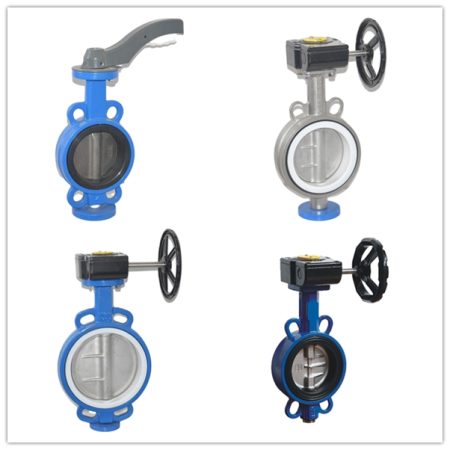
Conclusion butterfly valve material selection guide
Selecting the proper materials for butterfly valves is a critical step in ensuring their optimal performance, reliability, and longevity. A wide range of factors must be considered, including the valve’s intended use, environmental conditions, temperature range, pressure range, flow rate, and cost. With so many factors to take into account, selecting the proper materials can be daunting, but it is essential to make informed decisions that balance cost with functionality.
The valve’s intended use is among the most critical factors to consider when selecting valve materials. Materials suited for high-pressure or high-temperature applications may not be necessary for low-pressure and low-temperature applications. Similarly, corrosive substances require resistant materials to prevent valve failures caused by corrosion.
The environmental conditions the valve is exposed to can significantly affect valve materials. Factors such as humidity, wind and weather, vibration, and shock load can compromise valve performance, reliability, and lifespan. Understanding these factors is crucial for selecting materials that can resist environmental conditions and maintain optimal performance.
Temperature and pressure ranges are also crucial considerations when selecting valve materials. High-temperature and high-pressure applications require materials that can withstand such extreme conditions without compromising valve integrity. Materials like nickel alloys, carbon, and stainless steel offer excellent resistance to extreme temperatures and pressures.
Cost is another vital factor that must be considered when selecting valve materials. While high-end materials may offer superior quality, they may not always be necessary for specific applications. Balancing cost against performance considerations will enable informed decisions that optimize performance and minimize overall costs.
In conclusion, selecting the proper materials for butterfly valves requires careful consideration of multiple factors. By taking into account the intended use, environmental conditions, temperature range, pressure range, flow rate, and cost, one can make well-informed decisions that balance cost with functionality, resulting in optimal valve performance, increased reliability, and reduced long-term costs. Working with an experienced valve supplier can aid in selecting the most appropriate materials for a specific application. Use these factors as a guide and prioritize informed decision-making to ensure optimal performance, longevity, and cost-effectiveness of butterfly valve materials.
Recap on the importance of selecting the right materials for butterfly valves
Selecting the proper materials is a crucial factor when it comes to the performance and longevity of electric butterfly valve. Choosing the wrong materials can result in serious consequences such as valve failure, downtime, maintenance, and replacement costs. Getting the right materials is vital to ensure optimal valve performance, safety, and efficiency. Therefore, weighing the benefits and costs of the selected materials is essential to balance performance with financial considerations. With the right materials in place, butterfly valves can provide reliable performance, withstand extreme conditions, and resist environmental hazards. In summary, choosing suitable materials is not an option but a necessity to ensure optimal butterfly valve performance and reduce long-term costs.
Final thoughts on the importance of understanding the fluid medium, operating temperature range, intended use, environmental factors, and cost.
In conclusion, understanding the fluid medium, operating temperature range, intended use, environmental factors, and cost is crucial when selecting butterfly valve materials. These factors can significantly influence the performance, durability, and efficiency of the valve, along with the total cost of ownership. Whether it is high-pressure, corrosive, or high-temperature applications, selecting the right materials can make a significant difference in the valve’s performance and longevity. Environmental factors such as vibration, shock load, wind, and weather conditions can also affect valve materials and, consequently, valve performance. Ultimately, balancing the benefits of high-end materials with their cost and considering the cost of repairs and potential downtime is essential. Understanding these factors can aid in selecting materials that will provide optimal performance and longevity, reduce costs, and ensure safety. By evaluating these critical factors, one can make well-informed decisions when selecting butterfly valve materials that will result in improved reliability, safety, and overall performance.


